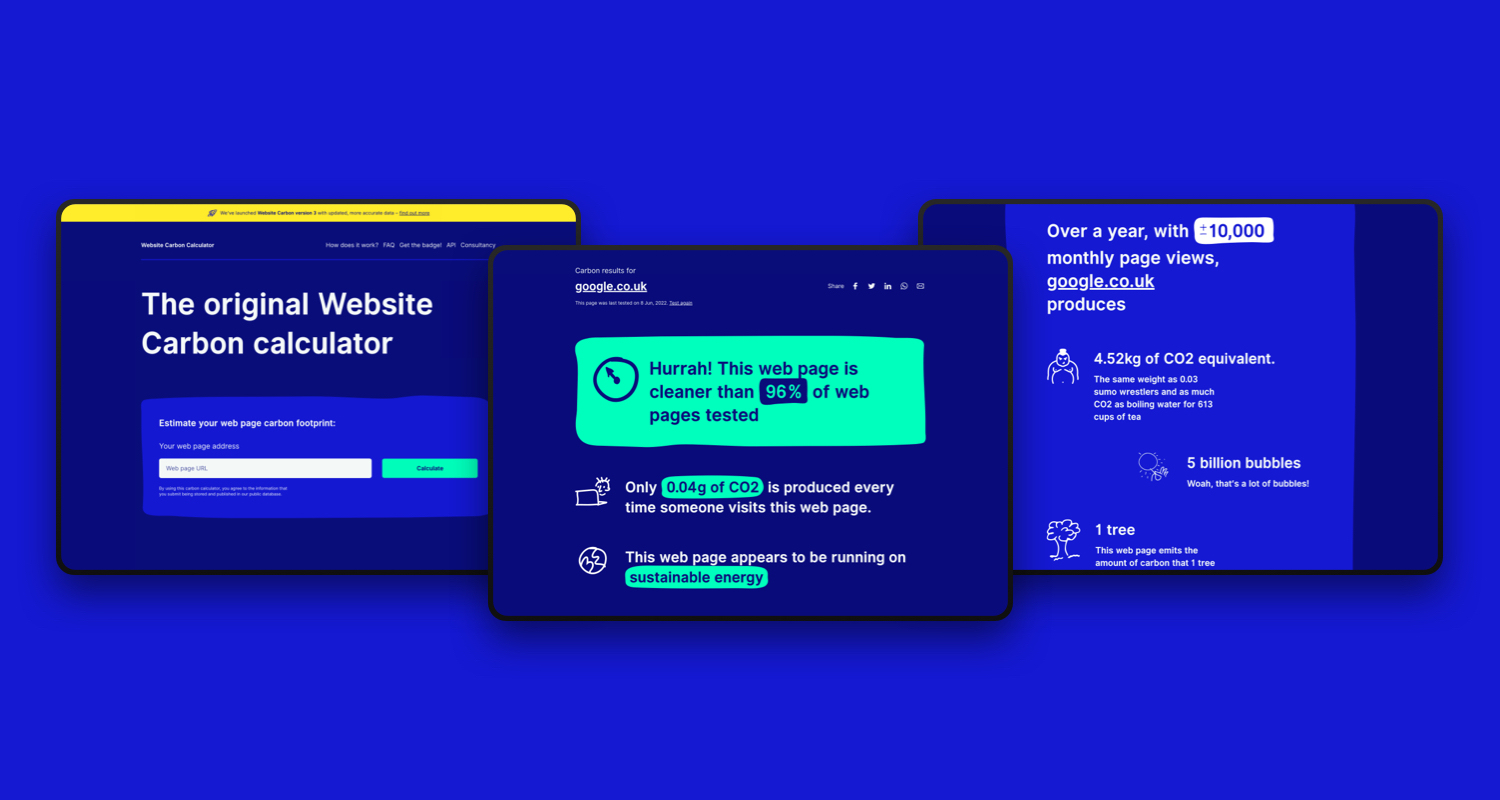Digital transformation is having a profound effect on businesses and is changing the way they operate online, however, our online habits are having a surprisingly harmful effect on the environment. Every minute that we spend scrolling a newsfeed, browsing the internet, streaming a video, joining a conference etc. contributes to your and your business’ digital carbon footprint.
Internet usage alone contributes to a staggering 3.7% of global emissions – which is equivalent to all air traffic in the world – a figure that’s expected to double by 2025 indicating a substantial increase in CO2 emissions resulting from internet use.
With the shift to remote work, our reliance on the internet has only increased, further exacerbating the problem. Fortunately, there are practical measures you can take to minimise your businesses carbon output.

How do digital solutions produce a carbon footprint?
A digital carbon footprint is the CO2 emissions that result from the production, use and data transfer of digital devices. Hosting, transporting and viewing digital services can all contribute to this output. Power usage across all three of these channels is then amplified by things such as the number of website pages, requests, volume and file size. Activities such as internet traffic, sending emails, streaming video content, video conference calls and voice over VoIP all use this power. The impact can be huge – data from Science Focus and OVO Energy suggests “global email usage generates as much CO2 as having 7 million extra cars on the road”. This may already sound like a huge amount, but this next figure that encompasses all internet usage is staggering:
“If the internet was a country, it would be the world’s sixth-largest polluter” – nature.com.

So how can you measure a website’s carbon footprint?
Despite the ease that the internet and digital technologies bring to our lives, they do have their drawbacks – one of which is the impact websites have on the environment. But how can you measure this impact?
Here are a selection of tools that you can use to audit your website to make a start with recognising and reducing your digital carbon footprint:
- Inbuilt browser tools
- Allows you to see actual page size, are there any really large images that can be resized and/or are contributing massively to your websites page size
- Page speed insights
- Gives you more in-depth technical information such as whether you are leveraging compression to reduce the amount of data transported
- Website usage analytics (for example as provided by Google Analytics)
- Are any pages obsolete or out of date, should they be redirected to more appropriate current pages?
- Are there pages with very similar content (“duplicate content”) that can be condensed into a single page?
- Can any key user journeys be shortened so users can find the content with fewer page views?

What can you do immediately to reduce the carbon footprint of your website?
Here are some quick wins you can do right away to help reduce the carbon footprint of your website which are low cost and easy to implement:
- Review image sizes and look for any oversized images that can be resized and/or compressed – adding images larger than necessary and will result in larger page sizes. Before uploading your images to your site, compress them to reduce the file size even further. Online tools such as Compress JPG or PNG Gauntlet can compress images for you
- Ensure any documents uploaded are not saved for print but instead saved for web
- If your website has a scrolling hero banner, keep the banner to a maximum of 3 images
- Ensure you are using auto playing video only when it’s strictly necessary as video uses a huge amount of bandwidth and processing power (which both need energy!). Consider changing to ‘on demand’ by adding a play / pause button
- Remove any out of date, unnecessary and largely duplicated pages – regularly spring cleaning pages that you’re not using anymore not only improves your carbon footprint, but ensures your website is optimised for search and will help your site visitors find the content they want
- Assess your SEO and content – 68% of users initiate their journey through search engines. Ensuring your audience lands on the right page reduces your website’s carbon footprint considerably

The bigger picture
What are some viable long-term solutions to minimise your carbon footprint?
One effective measure is to migrate your hosting (and IT infrastructure) to a carbon neutral provider – these companies strive to maintain a balance between the amount of carbon they produce and remove. Another option is to choose a carbon-negative provider that removes more carbon than they emit.
To further decrease your carbon footprint, consider selecting a provider located closer to your user base. This can reduce transportation emissions and have a positive impact on your overall carbon footprint. Additionally, some hosted web and IT solutions offer a sleep mode feature that can be enabled to conserve energy.
Content Delivery Networks (CDNs) also offer a remarkable positive effect on the environment. As its name suggests CDNs provide content to users through its network of fast servers worldwide. This means that users can access the content they need more quickly, without the need for multiple requests to distant servers, which consume more energy and produce more carbon emissions.

What else is technology doing to support reducing carbon emissions?
Data centres, which consume large amounts of energy to store vast quantities of digital information, contribute massively to environmental concerns such as high greenhouse gas emissions from cooling systems and IT equipment, and excessive energy consumption. In fact, data centres currently account for nearly 4% all greenhouse gas emissions worldwide, which exceeds the aviation industry and shipping. But, by harnessing technology like AI, data centres are making significant progress towards reducing their environmental impact and improving their sustainability. Major companies like Google have already invested in AI to reduce energy consumption at its data centres. It has been estimated that AI can help reduce carbon emissions by a staggering 14 billion tons by 2035 and has the ground-breaking potential, when used within data centres, to optimise maintenance and electricity production.
CMS platforms such as WordPress and Umbraco play a huge role in shaping the future of the digital landscape in powering millions of websites worldwide. CMS platforms are becoming increasingly conscious of their carbon footprint and strive to adopt more eco-friendly practices. Both WordPress and Umbraco regularly release patches and updates with a focus on improving performance, these updates not only help in minimising the carbon emissions with running websites, but strive for a better user experience, help websites rank higher, and reduce unnecessary resource consumption.
As technology evolves, older computers with higher power demands are gradually being phased out. Manufacturers now design computer components that consume less power while delivering better performance. This shift is not only beneficial for individual users in terms of user experience and a reduced electricity bill but also has significant environmental benefits too!
What’s next?
So now you’ve learned the ins and outs of sustainability and the digital dilemma, what can you do next to help with the issue? You can help by raising awareness across the relevant departments, take some of the baseline measurements we’ve discussed in this blog and begin your journey to becoming more carbon neutral.
Get in touch to see how we can help to lower the carbon output of your website.





